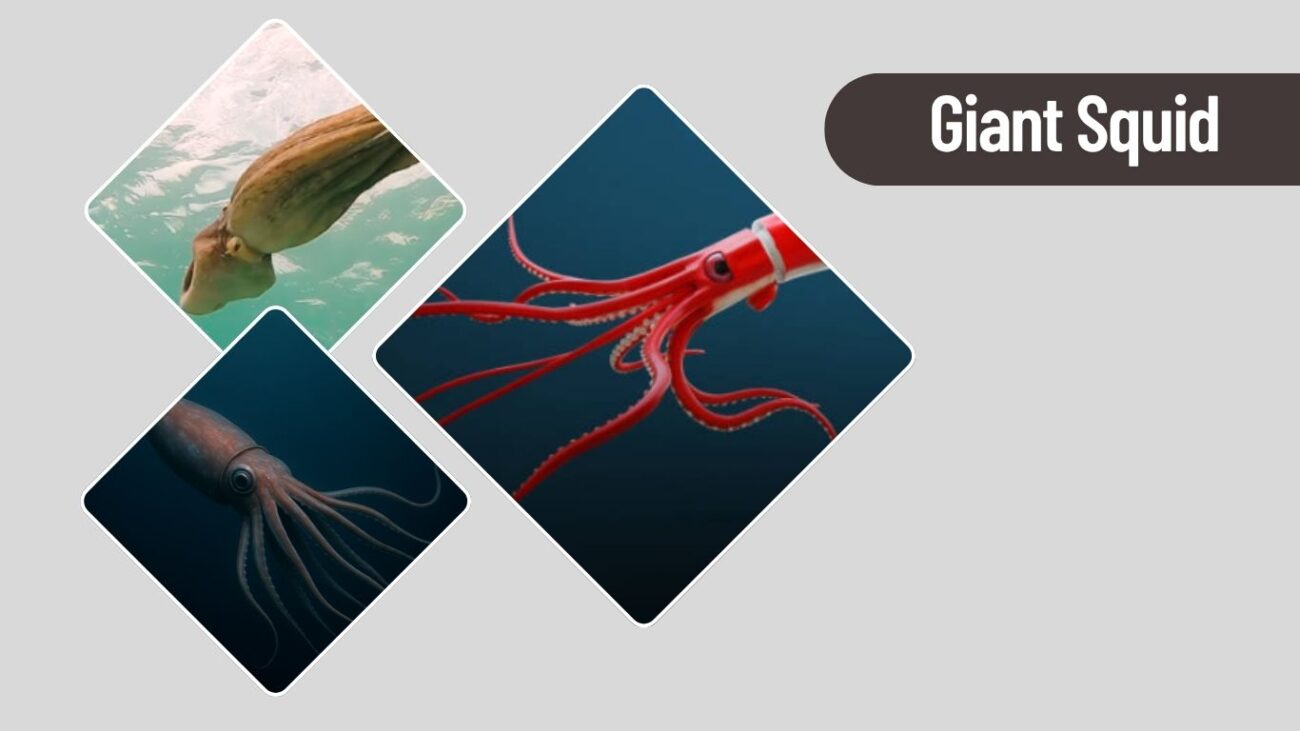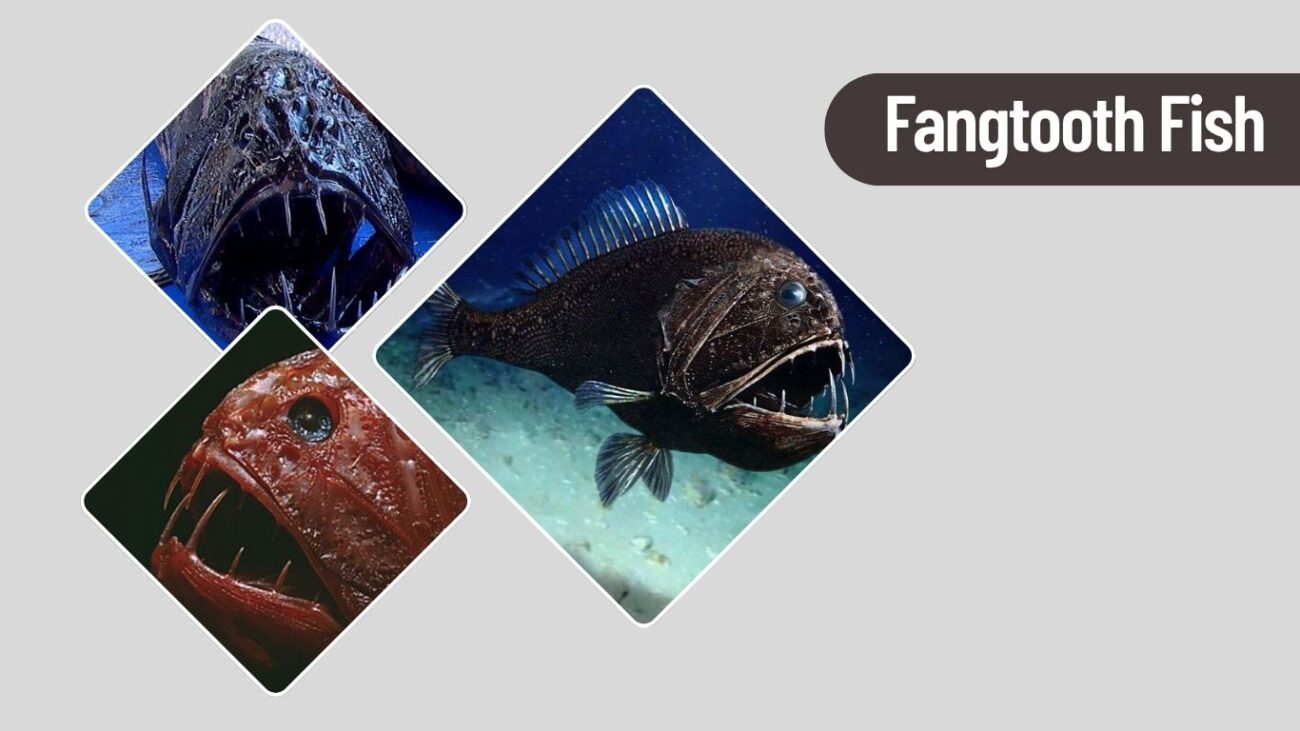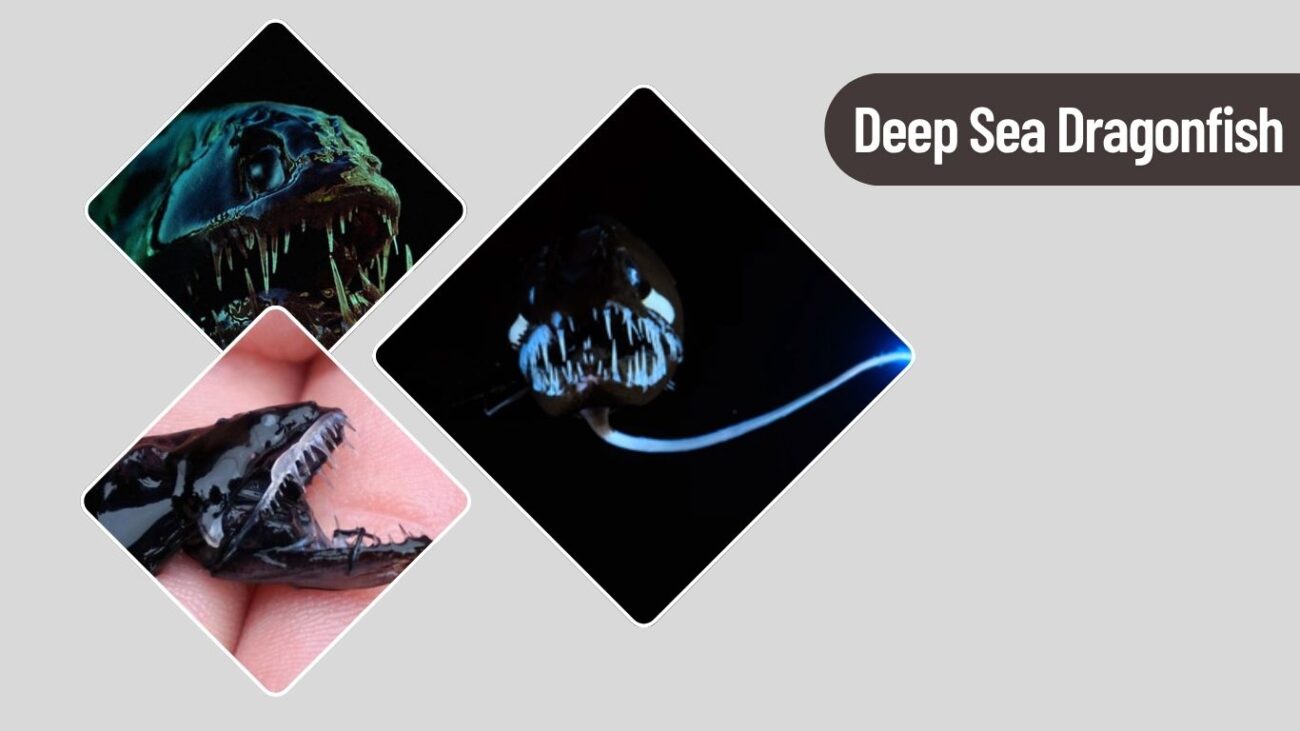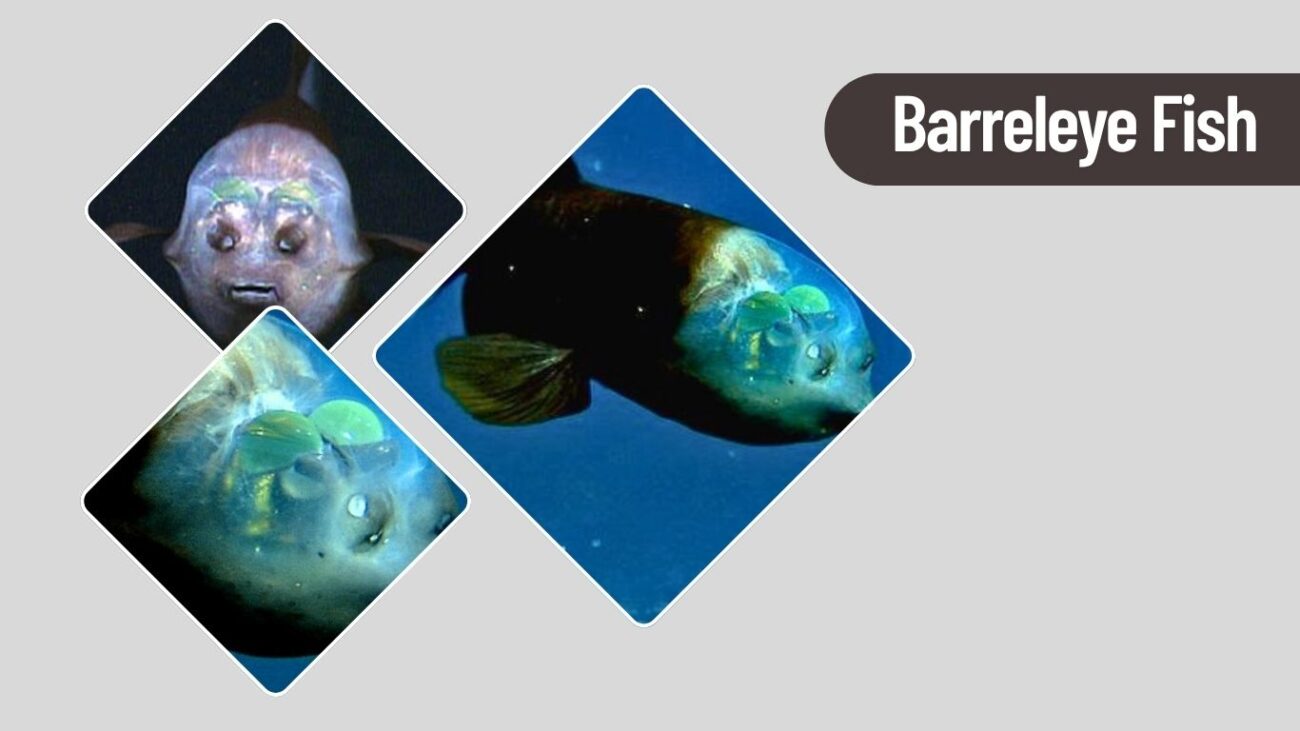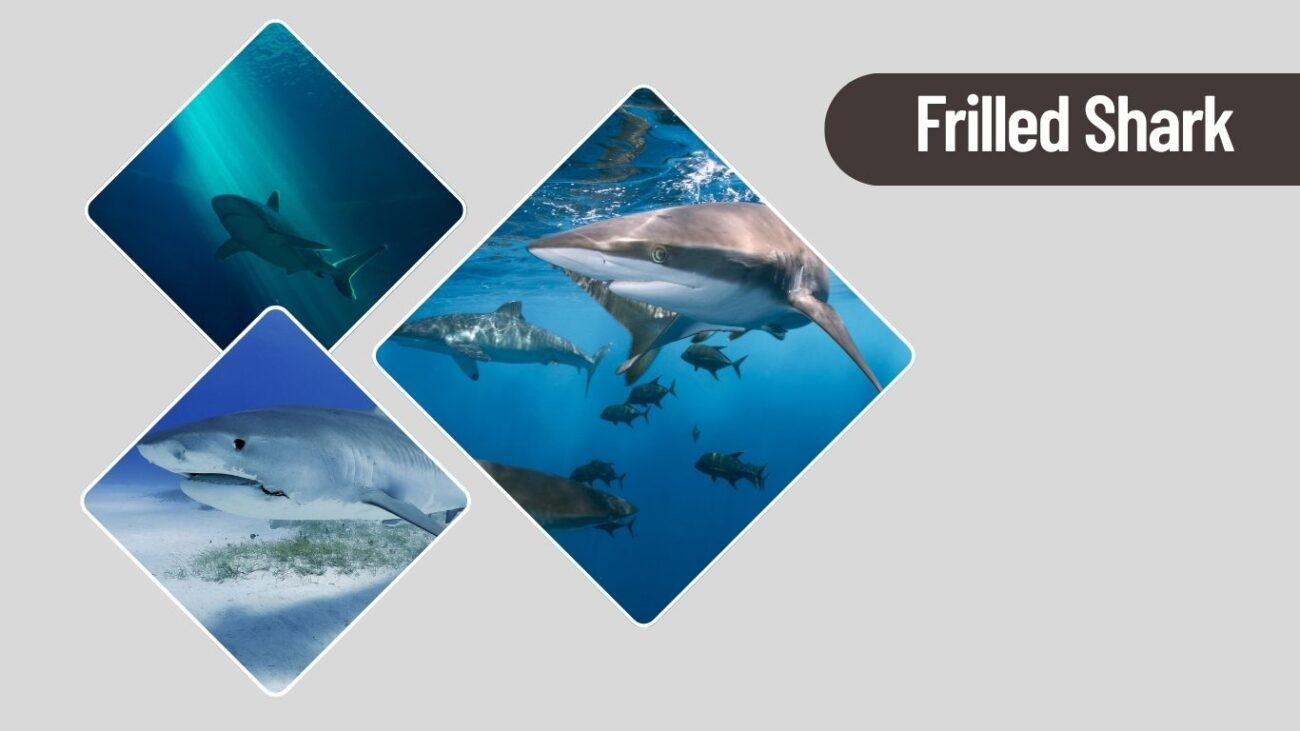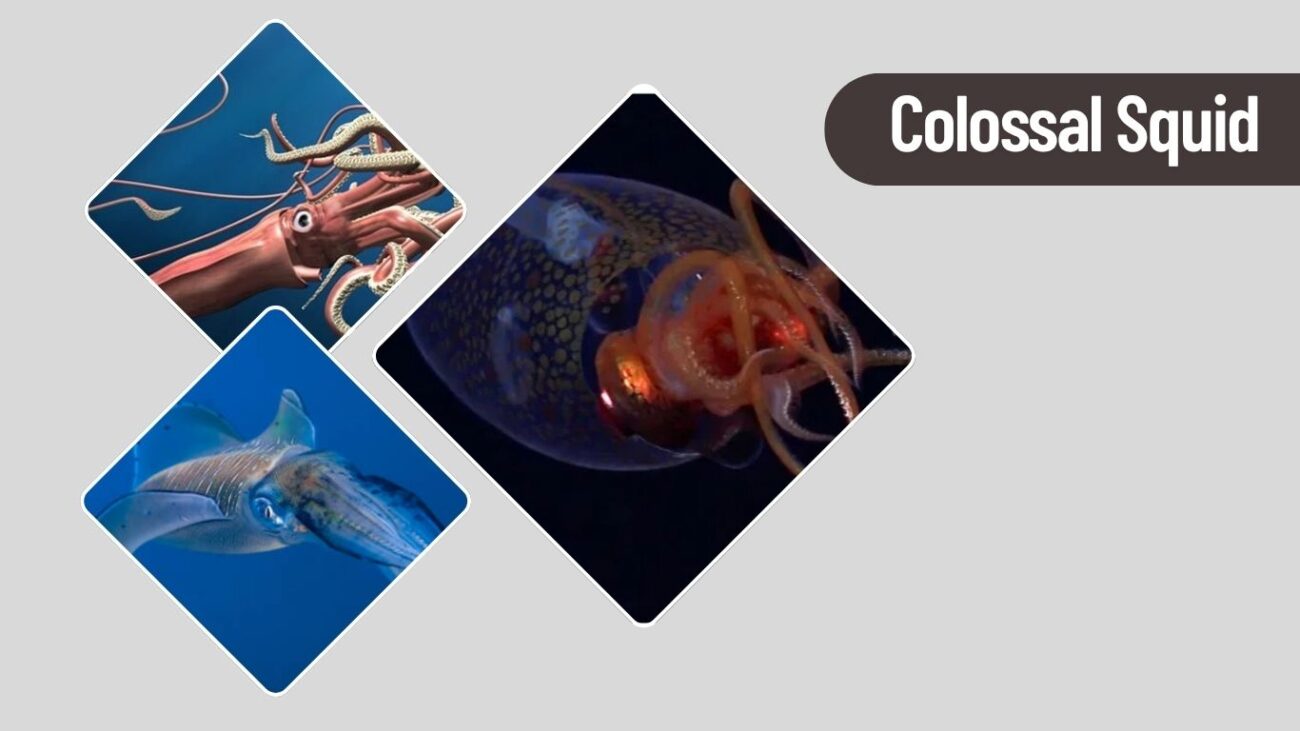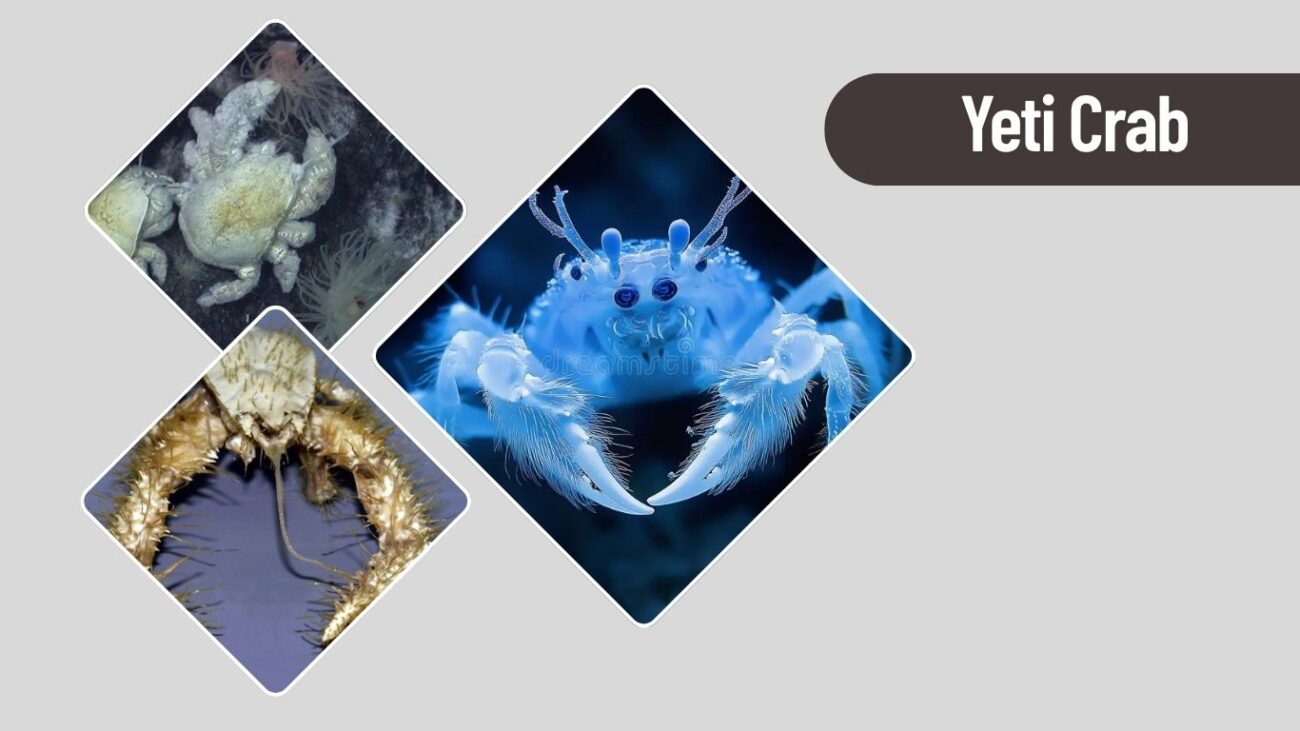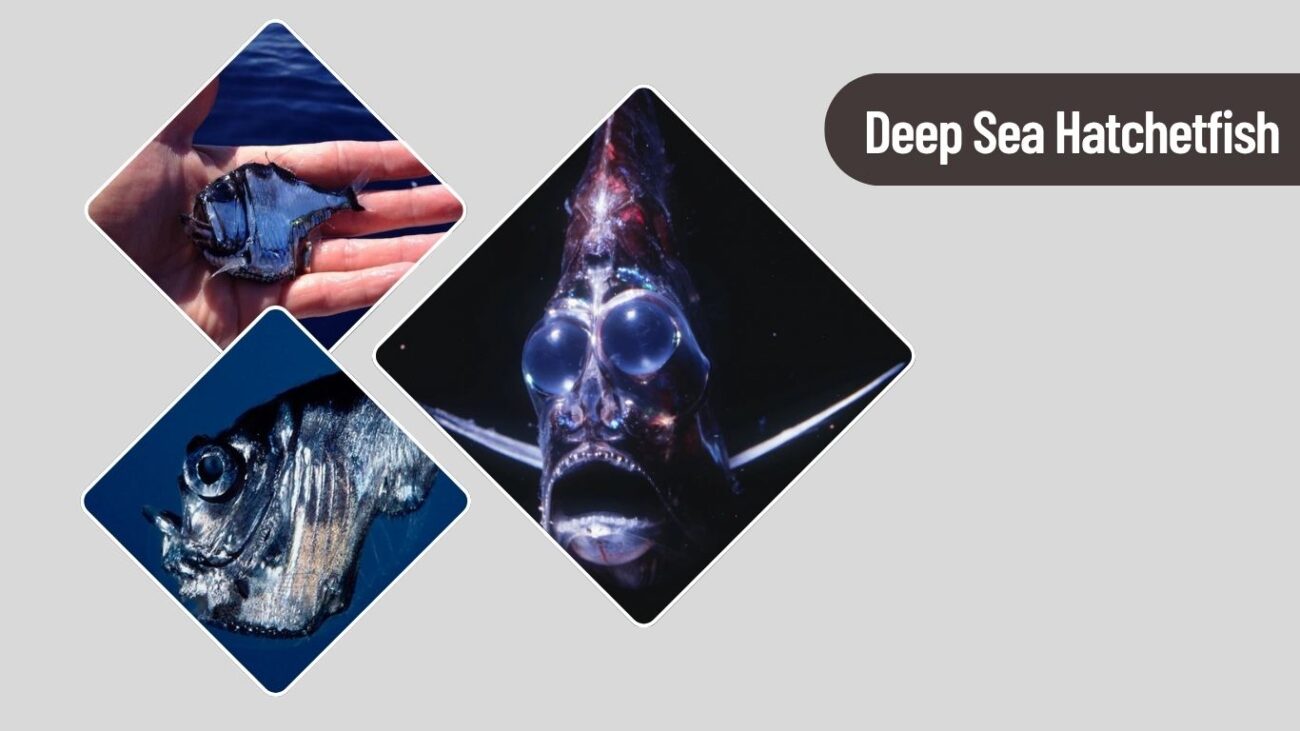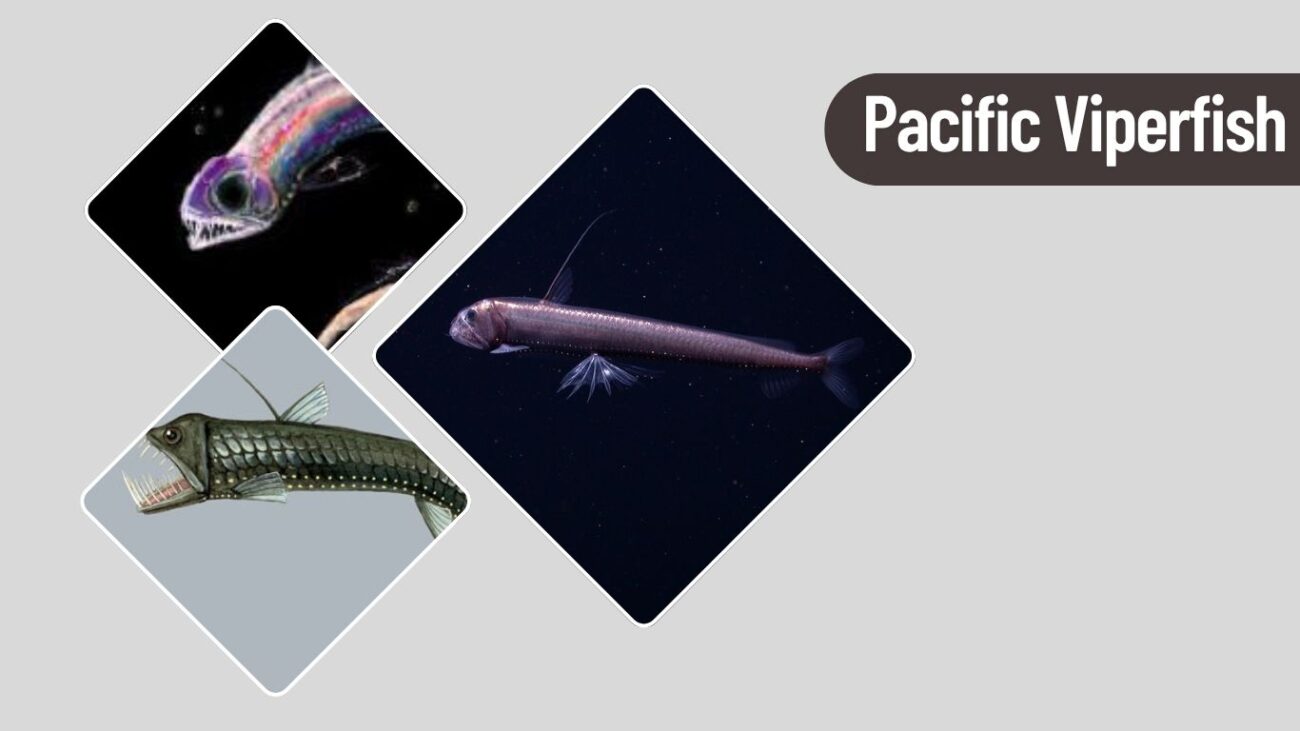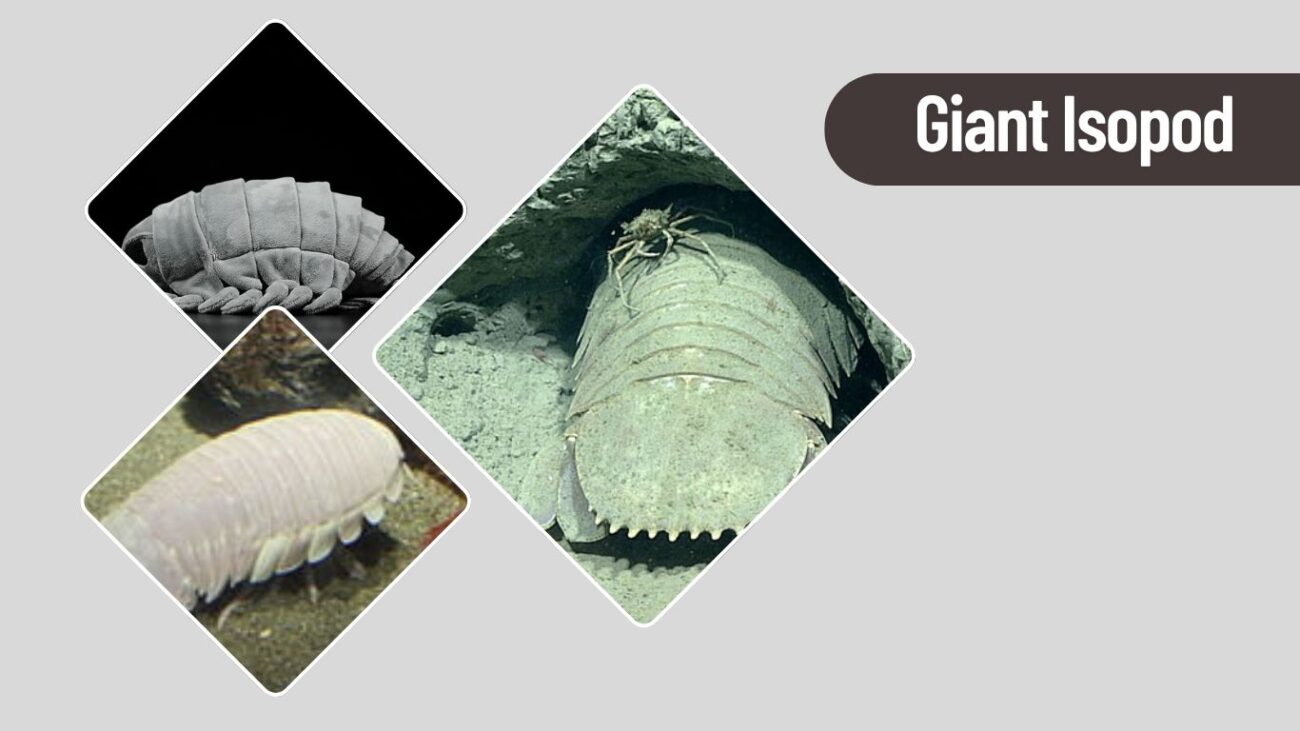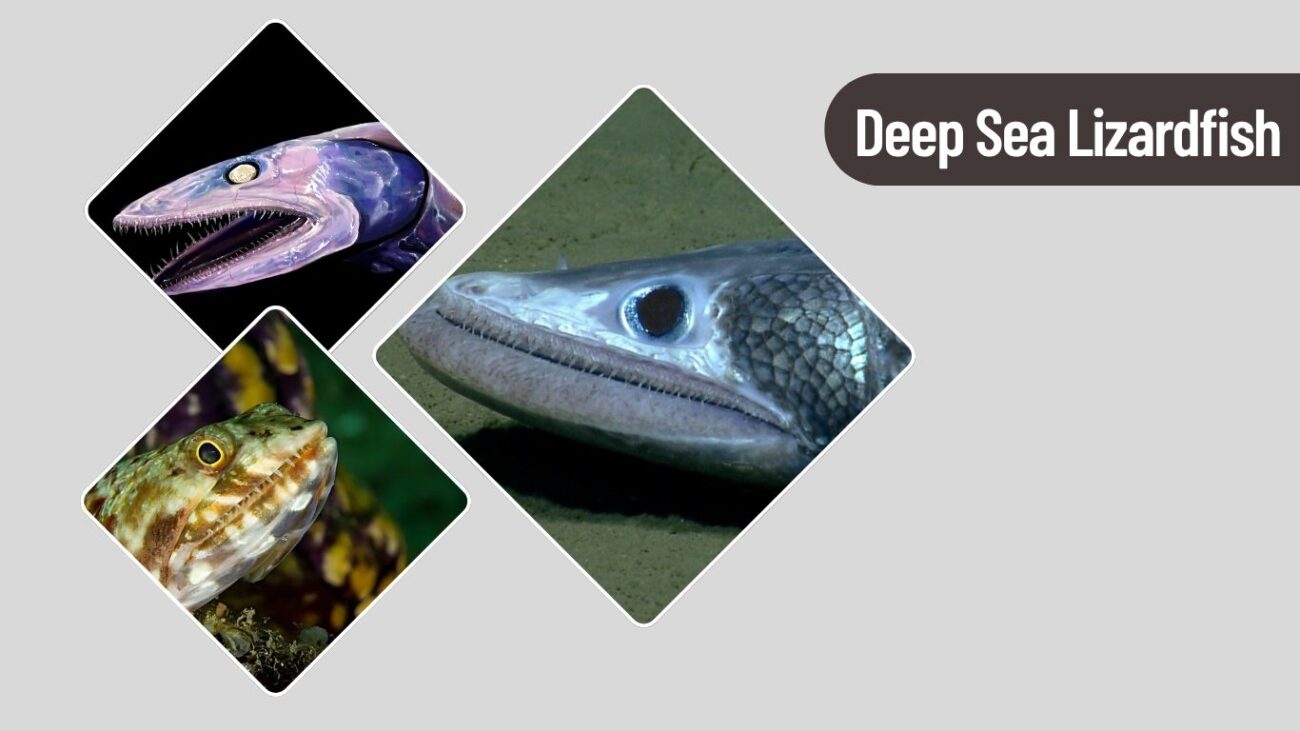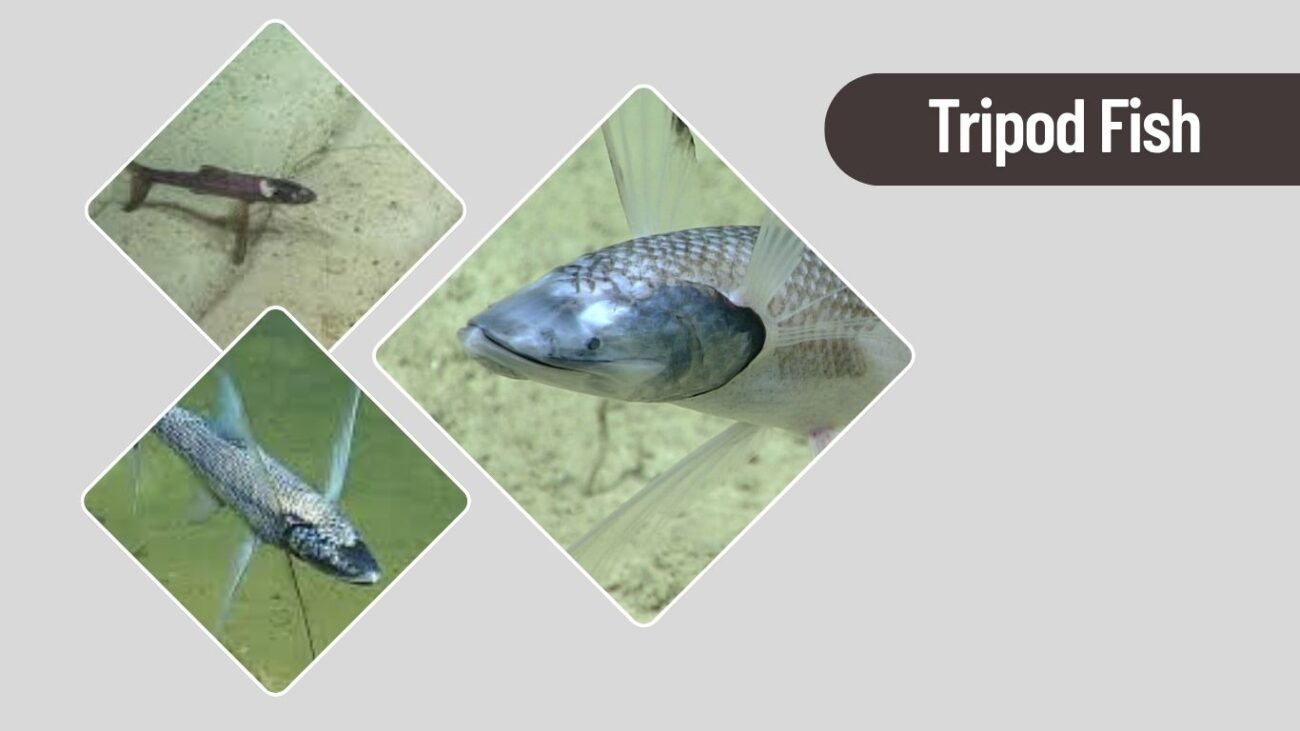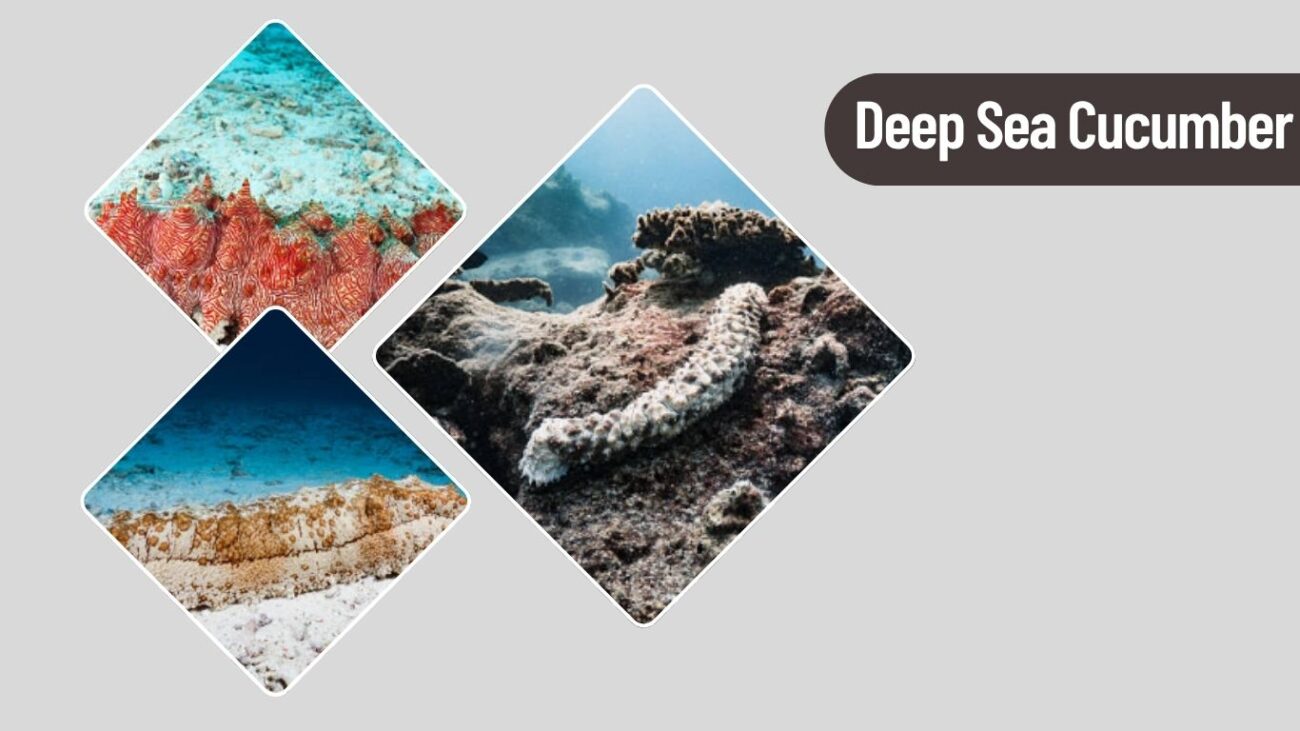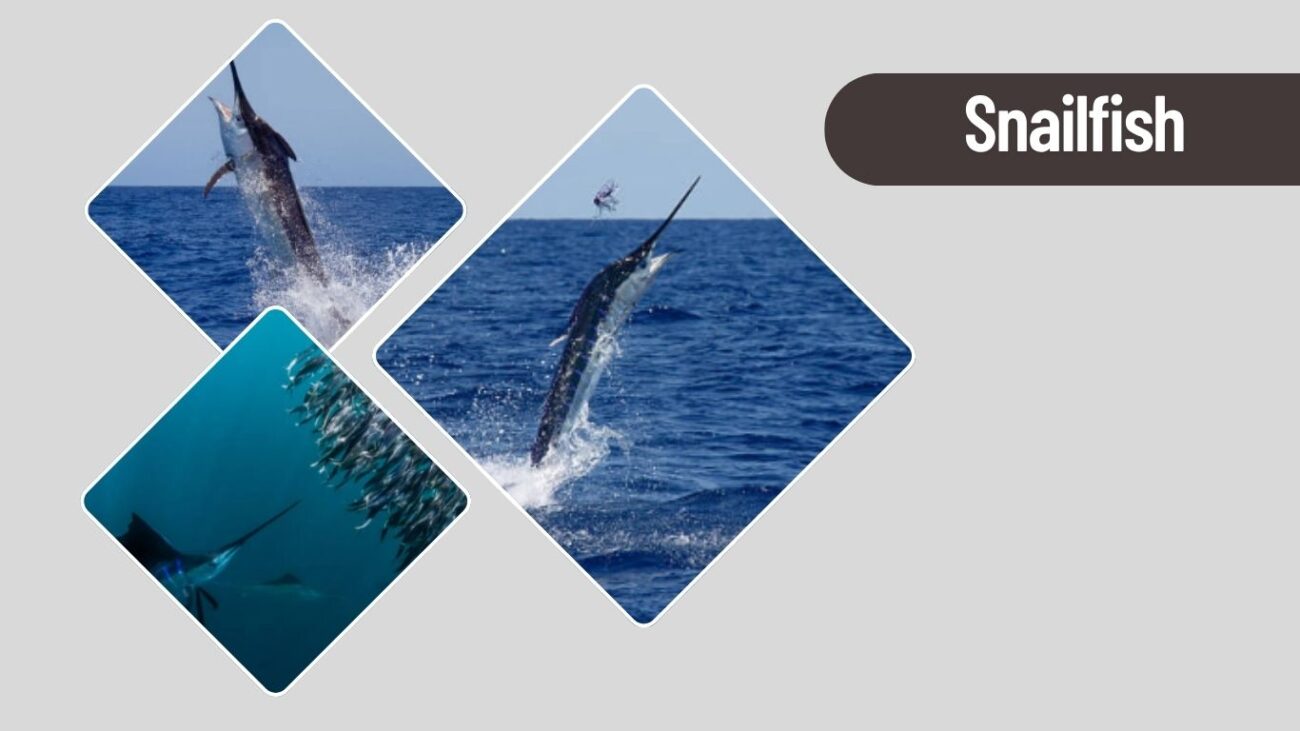The deep sea is one of the most extreme and mysterious environments on Earth, home to creatures adapted to survive in total darkness, freezing temperatures, and crushing pressure. From glowing predators to transparent drifters, these 26 deep sea animals showcase nature’s most fascinating adaptations. Whether eerie, elegant, or downright bizarre, each of these species proves that life can thrive in even the harshest corners of our planet.
1. Anglerfish – Iconic Deep Sea Predator
The anglerfish is one of the most well-known and eerie deep sea animals. Famous for the glowing lure on its head, it thrives in the dark, high-pressure depths of the ocean where very few other creatures can survive. Its bizarre appearance and unique hunting method make it a standout species of the deep.
Identification
- Large head with a wide, crescent-shaped mouth
- Long dorsal spine modified into a bioluminescent lure (esca)
- Small, beady eyes and sharp, translucent teeth
- Females can grow up to 3 feet; males are much smaller
- Rough, dark-colored skin for camouflage in darkness
Habitat and Depth Range
Anglerfish are found in the bathypelagic zone, typically between 660 to 9,800 feet (200 to 3,000 meters) deep. They inhabit the Atlantic, Antarctic, and Indian Oceans, where sunlight does not penetrate.
Behavior and Adaptations
The anglerfish uses its glowing lure to attract prey close enough to snatch with lightning-fast jaws. Some species show sexual parasitism, where a tiny male fuses permanently to a female’s body to reproduce—an extreme adaptation to the scarcity of mates in the deep sea.
2. Giant Squid – Elusive Deep Sea Cephalopod
The giant squid is one of the largest and most mysterious deep sea animals ever discovered. Long considered a sea legend, it lives in the deep, dark ocean and is rarely seen alive by humans.
Identification
- Long, torpedo-shaped body with eight arms and two elongated feeding tentacles
- Large eyes—up to 10 inches in diameter (the largest in the animal kingdom)
- Serrated suckers for capturing prey
- Can grow up to 40–43 feet in length
- Soft, reddish-pink skin with a finned mantle
Habitat and Depth Range
Giant squids live in deep ocean zones, typically 1,000 to 3,000 feet (300 to 1,000 meters) below the surface. They inhabit all of the world’s oceans, especially in cold, deep waters near continental slopes and ocean trenches.
Behavior and Mystery
They are solitary and elusive, using their long tentacles to catch fish and other deep sea animals. Most of what we know about them comes from specimens washed ashore or found in whale stomachs, as they are a favorite prey of sperm whales.
3. Dumbo Octopus – Deep Sea Cuteness
The Dumbo octopus is a soft-bodied deep sea animal named after its ear-like fins that resemble the Disney character Dumbo. It’s known for its adorable appearance and calm, slow-floating movement in the pitch-black ocean depths.
Identification
- Small, gelatinous body with flappy, ear-like fins on the head
- Webbing between arms gives it an umbrella-like shape when gliding
- Typically 8 to 12 inches in size
- Pale pink, white, or purple in color
- No ink sac—unnecessary in complete darkness
Habitat and Depth Range
Found at extreme depths of 10,000 to 13,000 feet (3,000 to 4,000 meters), often on the abyssal plain. They inhabit deep parts of the Pacific and Atlantic Oceans.
Behavior and Adaptations
Dumbo octopuses hover just above the seafloor, feeding on worms, copepods, and other invertebrates. They use their fins to swim gently, unlike other octopuses that rely on jet propulsion. Their cute, slow-floating behavior and soft texture make them a favorite among deep sea explorers.
4. Goblin Shark – Rare Deep Sea Relic
The goblin shark is a bizarre and rarely seen deep sea shark species, sometimes referred to as a “living fossil” due to its ancient lineage. Its long, flattened snout and extendable jaw give it one of the most alien appearances in the ocean.
Identification
- Long, flattened snout with electroreceptors
- Protrusible jaws that extend forward to grab prey
- Soft, pinkish-gray skin and flabby body
- Narrow, blade-like teeth
- Typically 10 to 13 feet long
Habitat and Depth Range
Goblin sharks are found at depths of 3,000 to 4,300 feet (900 to 1,300 meters), but can be recorded as deep as 4,600 feet (1,400 meters). They inhabit continental slopes and submarine canyons in oceans worldwide.
Behavior and Feeding
These deep sea animals hunt by lurking in the dark, detecting electric signals from prey, then quickly snapping forward their jaws to catch it. Their eerie look and slow movement help them remain hidden in the deep ocean environment.
5. Vampire Squid – Mysterious Deep Sea Drifter
Despite its fearsome name, the vampire squid is a gentle deep sea cephalopod with a unique appearance. It has large eyes, a cloak-like webbing between its arms, and glides effortlessly in low-oxygen zones where few creatures survive.
Identification
- Deep red to black body with webbed arms forming a cloak
- Bioluminescent organs and large, blue-glowing eyes
- Up to 1 foot in length
- Lacks suckers—has spiny projections on arms instead
- Soft, jelly-like texture adapted to low-pressure environments
Habitat and Depth Range
Found in the oxygen minimum zones of the deep sea, typically between 2,000 to 3,000 feet (600 to 900 meters). Inhabits deep waters of the tropical and temperate oceans, including the Atlantic and Pacific.
Behavior and Adaptations
Vampire squid feed on marine snow—a mix of dead plankton, fecal pellets, and organic particles. They use minimal energy and can turn themselves inside-out as a defense mechanism. Their glowing body and floating cloak-like arms give them a ghostly presence in the deep.
6. Fangtooth Fish – Deep Sea Monster in Miniature
The fangtooth fish may be small, but it has one of the most terrifying appearances in the deep sea. Its oversized fangs and dark, bony body are perfectly suited for life in the pitch-black ocean depths.
Identification
- Large, needle-sharp fang-like teeth
- Small, compressed body with a huge head and gaping mouth
- Dark brown to black in color
- Adult size ranges from 6 to 7 inches
- Sunken eyes adapted for low light
Habitat and Depth Range
Fangtooth fish live at depths of 2,000 to 16,500 feet (600 to 5,000 meters) in tropical and temperate deep ocean waters worldwide.
Behavior and Diet
Despite its menacing look, the fangtooth is a slow, small predator that feeds on fish and crustaceans, using its massive teeth to snare prey. Juveniles live in shallower waters and migrate deeper as they grow.
7. Deep Sea Dragonfish – Bioluminescent Predator
The deep sea dragonfish is a fearsome-looking but small predator known for its glowing lure and ability to produce light from its body. It is perfectly adapted to the dark, crushing pressure of deep ocean zones.
Identification
- Slender body with bioluminescent barbel (chin whisker)
- Large mouth with fang-like teeth
- Black or dark brown in color for camouflage
- Grows up to 6 to 8 inches long
- Light-producing organs along its body
Habitat and Depth Range
Found at depths of 1,600 to 5,000 feet (500 to 1,500 meters) in deep tropical and subtropical ocean zones.
Behavior and Adaptations
Dragonfish use their bioluminescent lure to attract prey in the dark. They can also produce invisible red light, allowing them to see prey without being seen. Their powerful jaws and expandable stomachs allow them to swallow prey nearly their own size.
8. Barreleye Fish – Transparent-Headed Deep Sea Fish
The barreleye fish is one of the most unusual deep sea animals, famous for its transparent head and tubular, upward-facing eyes that can rotate. This bizarre adaptation helps it spot prey in the darkness above.
Identification
- Dome-shaped, transparent head revealing internal organs
- Bright green, barrel-shaped eyes that rotate inside the skull
- Small mouth and flat body
- Usually about 6 inches long
- Dark body with translucent skull dome
Habitat and Depth Range
Found at depths of 1,600 to 2,600 feet (500 to 800 meters) in the Pacific Ocean, particularly off the coast of California and Hawaii.
Behavior and Adaptations
Barreleye fish float motionless, conserving energy while watching for prey above. Their rotating eyes allow them to track prey and avoid predators, and their transparent dome may help protect their eyes from jellyfish stings or light distortion.
9. Gulper Eel – Elastic-Mouth Deep Sea Creature
The gulper eel, also called the pelican eel, is a deep sea creature with a massive, expandable mouth and glowing tail. Its unusual appearance and ability to swallow large prey make it one of the deep’s most impressive predators.
Identification
- Extremely large, pouch-like mouth
- Slender, eel-like body up to 6 feet long
- Small eyes and bioluminescent tail tip
- Black or dark purple in color
- Lacks pelvic fins and has a long, whip-like tail
Habitat and Depth Range
Inhabits depths of 1,600 to 9,800 feet (500 to 3,000 meters) in deep tropical and temperate oceans worldwide.
Behavior and Feeding
Gulper eels use their expandable jaws and stomach to swallow prey much larger than themselves. Their glowing tail may be used to lure prey in the dark. Despite their frightening look, they are slow-moving and rarely encountered.
10. Frilled Shark – Ancient Deep Sea Predator
The frilled shark is a rare, primitive shark species that resembles a sea serpent. Its eel-like body and rows of needle-like teeth give it a prehistoric appearance, earning it the nickname “living fossil.”
Identification
- Long, slender body with frilly gill slits (6 pairs)
- Can grow up to 6.5 feet long
- Dark brown or gray skin
- 300+ needle-like teeth arranged in 25 rows
- Flexible jaws that open wide to swallow prey whole
Habitat and Depth Range
Found at depths of 1,000 to 5,000 feet (300 to 1,500 meters) in deep waters of the Atlantic and Pacific Oceans, particularly near continental slopes and submarine ridges.
Behavior and Diet
Frilled sharks are slow swimmers that ambush prey, such as squid, fish, and other sharks. They use their serpentine motion to strike, and their long teeth help hold slippery prey.
11. Colossal Squid – The Heaviest Deep Sea Cephalopod
The colossal squid is even heavier and more robust than the giant squid. It is one of the largest invertebrates known to science and is rarely seen due to its deep and remote habitat.
Identification
- Stocky body with shorter arms and longer tentacles
- Sharp, rotating hooks on tentacle clubs
- Large eyes—up to 11 inches in diameter
- Can grow over 30–40 feet in total length
- Thick, reddish skin and broad, muscular mantle
Habitat and Depth Range
Inhabits the Southern Ocean, especially around Antarctica, at depths of 3,300 to 6,600 feet (1,000 to 2,000 meters).
Behavior and Mystique
Very little is known about its behavior, but it is believed to feed on large fish and smaller squid. It is a known prey of sperm whales and is rarely seen alive—most specimens are recovered from whale stomachs or deep-sea fishing nets.
12. Yeti Crab – Furry-Clawed Deep Sea Crustacean
The yeti crab is a deep sea crustacean known for its strange, hairy claws. Discovered in 2005, this unusual animal lives near hydrothermal vents and relies on bacteria that grow on its claws for survival.
Identification
- White, hair-covered claws (setae) resembling fur
- Small body, around 6 inches long
- Lacks pigment and is blind
- Short legs and reduced eyes
- Belongs to the Kiwa genus, often called “yetis” of the sea
Habitat and Depth Range
Found near hydrothermal vents and cold seeps, particularly in the South Pacific Ocean, at depths of 7,200 feet (2,200 meters) and deeper.
Behavior and Adaptation
Yeti crabs “farm” chemosynthetic bacteria on their hairy claws, which they then consume. They wave their claws in nutrient-rich water to feed the bacteria—a unique form of deep sea symbiosis.
13. Deep Sea Hatchetfish – Mirror-Bodied Drifter
The deep sea hatchetfish is a small, silvery fish with a flattened, hatchet-shaped body and glowing organs. Despite its size, it’s an expert in deep sea camouflage, blending in with the darkness.
Identification
- Thin, compressed body with a hatchet-like shape
- Large, upward-facing eyes
- Silvery scales with bioluminescent photophores along the belly
- Typically 1 to 4 inches long
- Often appears metallic or mirror-like
Habitat and Depth Range
Lives at depths of 650 to 4,500 feet (200 to 1,400 meters) in all major oceans, particularly in tropical and temperate waters.
Behavior and Camouflage
Hatchetfish use counter-illumination—glowing light on their underside to match the faint light above—to become invisible to predators below. They feed on plankton and small crustaceans, often making nightly vertical migrations to shallower waters.
14. Pacific Viperfish – Needle-Toothed Deep Sea Hunter
The Pacific viperfish is one of the most fearsome-looking deep sea animals, with long, needle-like teeth and a hinged lower jaw. Despite its size, it’s a highly effective predator in the ocean’s dark zones.
Identification
- Slender, dark blue or black body
- Oversized fangs that extend outside the mouth
- Bioluminescent organs along its sides
- Typically grows 6 to 12 inches in length
- Large head and mouth relative to body size
Habitat and Depth Range
Inhabits depths of 1,000 to 5,000 feet (300 to 1,500 meters), mostly in the Pacific Ocean, but also found in other deep tropical and temperate seas.
Behavior and Feeding
The Pacific viperfish uses a light-producing lure on its dorsal spine to attract prey. Its jaws snap upward to impale small fish and crustaceans. This fish is capable of surviving extreme pressure and darkness, making it a top predator in its zone.
15. Giant Isopod – Deep Sea Armored Scavenger
The giant isopod is a large, crustacean relative of the pill bug, adapted to life on the deep sea floor. With its armored shell and slow movements, it survives by scavenging on the ocean bottom.
Identification
- Hard, segmented exoskeleton like a giant roly-poly
- 14 legs and two large compound eyes
- Pale pink or beige coloration
- Can grow up to 20 inches long
- Flat body adapted for crawling along the seafloor
Habitat and Depth Range
Found at depths of 1,600 to 7,500 feet (500 to 2,300 meters) in the Atlantic, Pacific, and Indian Oceans, especially on muddy or sandy sea bottoms.
Behavior and Diet
Giant isopods are scavengers, feeding on dead whales, fish, and other organic debris that sinks to the ocean floor. They can survive long periods without food, and are known to gorge when meals become available.
16. Sea Spider – Long-Legged Deep Sea Arthropod
The sea spider, also known as a pycnogonid, is a deep sea arthropod with an unusual body structure. Despite its name, it’s not a true spider but shares a similar appearance with its thin legs and small body.
Identification
- Tiny central body with extra-long, spindly legs
- Most have eight legs, though some have more
- No lungs or gills—oxygen diffuses through their legs
- Size ranges from a few millimeters to over 24 inches (in deep sea species)
- Often pale or translucent in color
Habitat and Depth Range
Found from shallow waters to depths exceeding 23,000 feet (7,000 meters), especially in Antarctic deep seas and ocean trenches.
Behavior and Feeding
Sea spiders feed by sucking fluids from soft-bodied invertebrates like anemones or sponges. Their simple bodies and long legs are uniquely adapted for surviving in the cold, oxygen-rich deep sea environment.
17. Deep Sea Lizardfish – Ambush Predator of the Abyss
The deep sea lizardfish is a predatory fish with a long, slender body and sharp teeth. It lurks near the seafloor, waiting to ambush prey with lightning-fast strikes.
Identification
- Slender, elongated body with needle-sharp teeth
- Large eyes adapted for low-light vision
- Dull brown or gray coloration
- Grows up to 2 feet long
- Large mouth with a hinged jaw and visible teeth
Habitat and Depth Range
Lives at depths of 3,000 to 13,000 feet (900 to 4,000 meters) in deep ocean basins and slopes, especially in the Atlantic and Indo-Pacific regions.
Behavior and Hunting
These fish lie motionless on the seafloor, blending in with the sediments. When prey passes by, they lunge upward to snatch it. Their expandable stomachs allow them to consume prey nearly as large as themselves.
18. Tripod Fish – Standing Deep Sea Drifter
The tripod fish is a strange and fascinating deep sea animal known for its ability to “stand” on the seafloor using three long, stiff fins—like a tripod. It patiently waits for food to drift by in the current.
Identification
- Elongated body with three extended fins: two pelvic and one tail fin
- Semi-transparent, pale gray or beige coloration
- Long pectoral fins used for sensing prey
- Typically 12 to 14 inches long
- Soft body adapted for life on the deep ocean floor
Habitat and Depth Range
Found at depths of 3,300 to 15,000 feet (1,000 to 4,500 meters), especially in the Atlantic, Indian, and Pacific Oceans, on flat abyssal plains.
Behavior and Feeding
Tripod fish are ambush predators, standing still and using their sensory fins to detect small crustaceans or plankton drifting in the current. They rarely swim, conserving energy in the cold, food-scarce deep sea.
19. Chimaera (Ghost Shark) – Deep Sea Cartilaginous Fish
Chimaeras, also called ghost sharks, are eerie-looking deep sea animals related to sharks and rays. Their smooth bodies, long tails, and vacant eyes give them a ghost-like appearance, perfectly suited to their deep ocean habitat.
Identification
- Smooth, scaleless body with elongated tail
- Large, wing-like pectoral fins
- Prominent, rabbit-like teeth or plate-like grinders
- Usually 2 to 5 feet in length
- Often pale gray, brown, or bluish in color
Habitat and Depth Range
Inhabit depths of 1,600 to 8,200 feet (500 to 2,500 meters), mostly in temperate and cold-water oceans across the globe.
Behavior and Adaptations
Chimaeras feed on bottom-dwelling invertebrates like mollusks and crustaceans. Their electroreceptive snouts help locate prey in total darkness. Unlike sharks, they have venomous spines in front of their dorsal fins for defense.
20. Deep Sea Cucumber – Soft-Bodied Seafloor Cleaner
The deep sea cucumber is a slow-moving, soft-bodied creature that plays a crucial role in cleaning the ocean floor. Though it may look strange, it helps maintain deep sea ecosystems by recycling organic material.
Identification
- Elongated, squishy body with soft skin
- Varies in color: pink, red, purple, or translucent
- Some species have tentacle-like feeding appendages
- Typically 4 to 12 inches long, though some reach over 3 feet
- Can eject internal organs as a defense mechanism
Habitat and Depth Range
Found on abyssal plains and ocean trenches, often at depths of 3,300 to 26,000 feet (1,000 to 8,000 meters) in all major oceans.
Behavior and Role
These creatures crawl slowly across the seabed, feeding on detritus and marine snow. Some swim short distances by undulating their bodies. They help recycle nutrients in deep ocean habitats.
21. Black Swallower – Extreme Deep Sea Eater
The black swallower is a small, deep sea fish known for its incredible ability to swallow prey larger than itself. Its expandable stomach and mouth make it one of the most extreme feeders in the ocean.
Identification
- Slender, black body with a massively expandable stomach
- Large, fang-like teeth and big eyes
- Typically grows to 7–10 inches long
- Smooth, scaleless skin
- Stomach often visibly distended from recent meals
Habitat and Depth Range
Lives at depths of 2,300 to 9,000 feet (700 to 2,750 meters) in tropical and subtropical deep ocean waters, especially in the Atlantic Ocean.
Behavior and Feeding
The black swallower hunts by ambushing fish, then engulfs them whole. It can eat prey over twice its own length. Sometimes, its meals are so large that they decay before digestion finishes, causing fatal bloating.
22. Glass Squid – Transparent Deep Sea Drifter
The glass squid is a group of deep sea squids known for their mostly transparent bodies, which help them remain nearly invisible in the ocean’s twilight zone. Their ghostly appearance is a perfect adaptation for avoiding predators.
Identification
- Clear, gelatinous body that shows internal organs
- Large eyes and small tentacles
- Rounded mantle and short arms
- Sizes vary from a few inches to over 3 feet, depending on species
- Some have light-producing organs for camouflage
Habitat and Depth Range
Found in mesopelagic to bathypelagic zones, typically between 650 to 8,200 feet (200 to 2,500 meters), in oceans worldwide.
Behavior and Adaptations
Glass squids use bioluminescence on their underside for counter-illumination, making them harder to see from below. They slowly drift through the water column, feeding on small fish and crustaceans.
23. Snailfish – Deepest Living Fish
The snailfish is a remarkable deep sea creature that holds the record for being found at the greatest ocean depths. Despite its fragile appearance, it’s highly specialized for surviving immense pressure.
Identification
- Soft, scaleless, gelatinous body
- Small fins and a large head
- Typically pale pink, white, or translucent
- Usually grows up to 10–12 inches, depending on species
- Fragile skeleton and thin skin
Habitat and Depth Range
Some species have been recorded at depths of over 27,000 feet (8,200 meters), especially in the Mariana Trench and Japan Trench.
Behavior and Survival
Snailfish feed on tiny crustaceans and marine snow. Their bodies lack heavy bones, which allows them to withstand extreme pressure. Though fragile in appearance, they are among the most successful creatures in the ocean’s hadal zone.
24. Deep Sea Bristle Worm – Armored Ocean Floor Forager
The deep sea bristle worm is a segmented, worm-like creature that scours the ocean floor for organic debris. Known for its bristly appendages and armored body, it thrives in some of the darkest, coldest parts of the ocean.
Identification
- Long, segmented body with paired bristles (chaetae) on each segment
- Varies in color: red, orange, or metallic
- Can be smooth, spiny, or armored depending on species
- Size ranges from 1 inch to over 12 inches
- Some species have jaw-like appendages or glowing parts
Habitat and Depth Range
Found in abyssal and hadal zones, typically at depths of 5,000 to 26,000 feet (1,500 to 8,000 meters) in deep ocean trenches and plains worldwide.
Behavior and Adaptations
These worms crawl or burrow through sediment, feeding on marine snow, detritus, or carrion. Some are predatory, while others are deposit feeders. Their bristles help them grip the soft seafloor, and some species exhibit bioluminescence for communication or defense.



